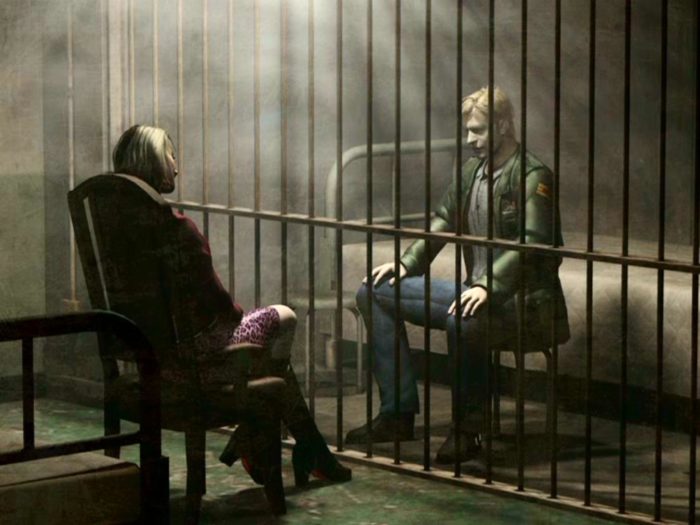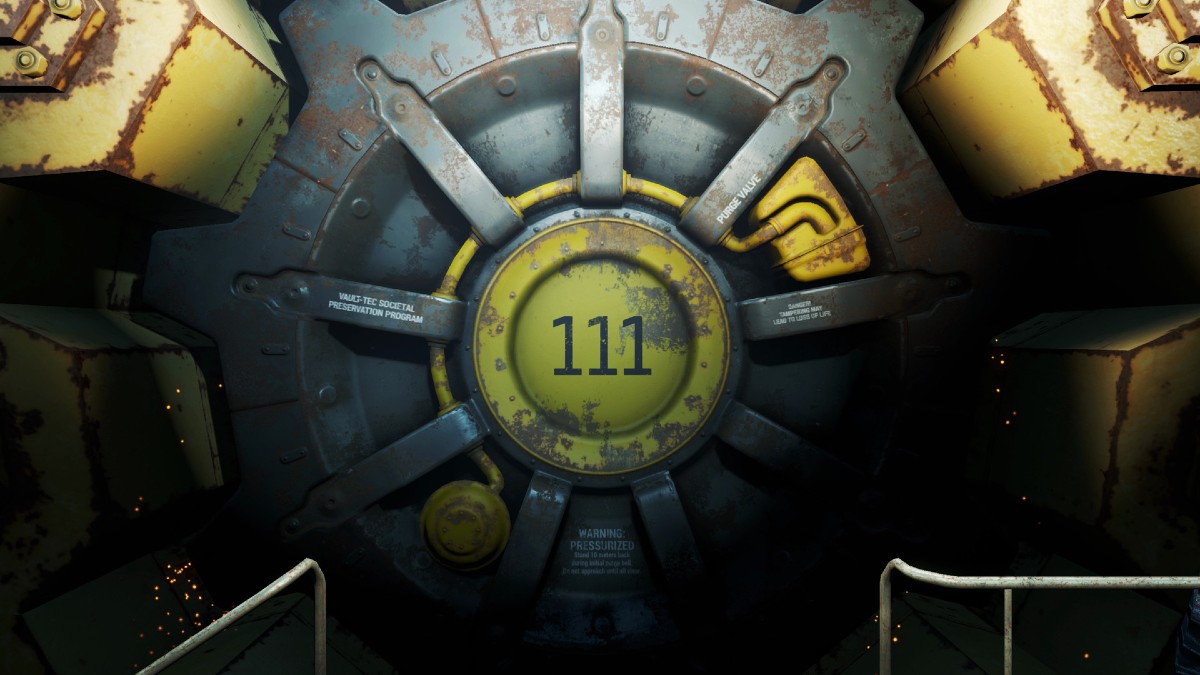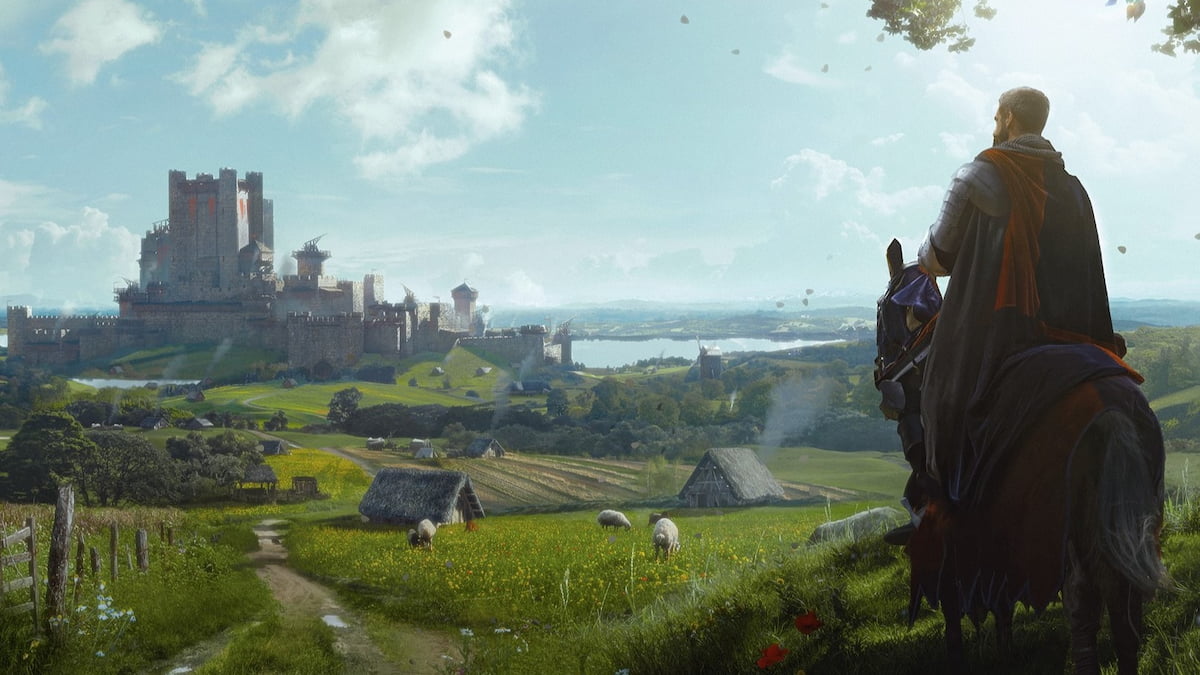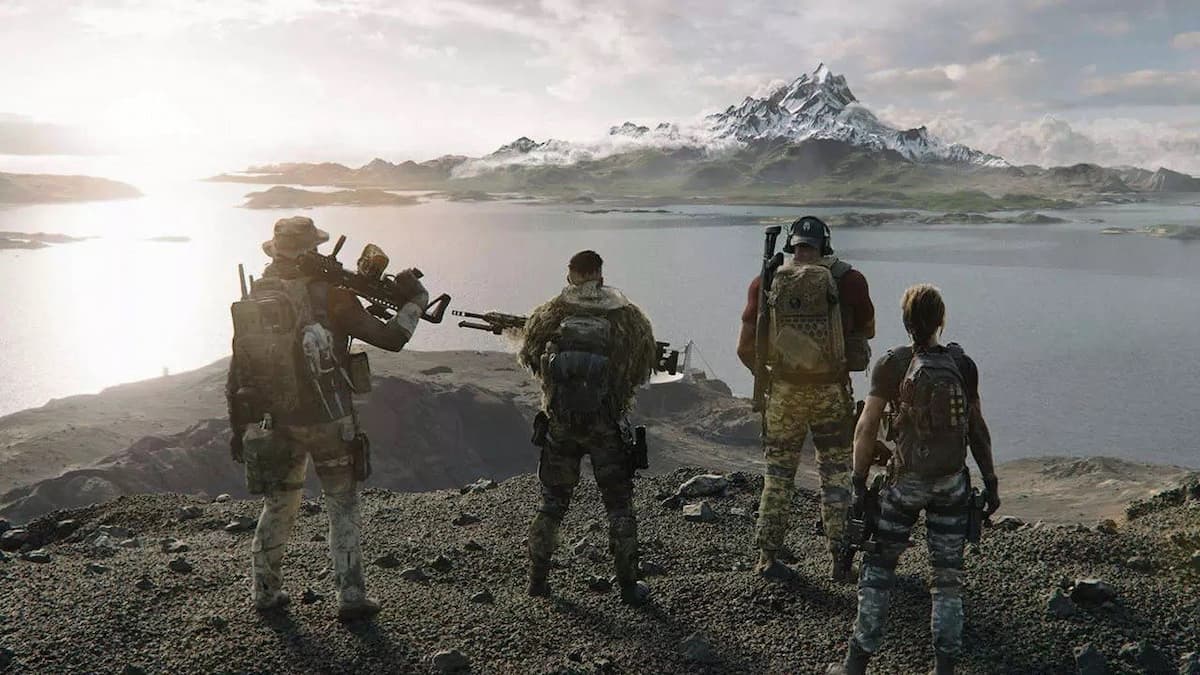[Endless Playlist is a series of monthly articles where we pick a video game soundtrack for discussion and try to provide a critical analysis of how it performs within the game it’s from, and how it holds up on its own. This month, because of Halloween spoopiness, we’re breaking down Silent Hill 2’s soundtrack.]
I often cite Silent Hill 2 whenever the topic of multiple endings in video games comes up. No other game does it better. Following the journey of protagonist James Sunderland as he explores the dreamy, foggy town searching for his wife, it’s his inane and seemingly inconsequential actions that determine the ending you get. Whereas the original Silent Hill lets you work towards a specific ending by scooping up the liquid to give to Cybil, Silent Hill 2 tracks the number of times you read a certain letter, or examined a knife, and how well you protected an NPC. If the game detects that you’ve been spending too much time thinking about your dead wife, it decides that your version of James secretly wants to die, and that’s why he came to Silent Hill in the first place. Then you get the ‘In Water’ ending.
But we’re not here to talk about the game and its genius design decisions. We’re here to discuss its (equally genius) soundtrack, composed by Akira Yamaoka.
Silent Hill 2 is a game about the psychological descent into madness, the loss of control, and its music reflects that well. Immediately after the self-assured punchiness of Theme of Laura, we’re treated to White Noiz, which is basically James’ theme. The track plays during the game’s first cutscene, where we’re introduced to James as he stares intensely into the bathroom mirror. Before we’re even thrown into the game proper, the game’s themes of self-reflection are already at play here.
Similar to Prisonic Fairytale, which plays as James reads Mary’s letter at the beginning of the game, White Noiz consists of drifting notes to create a serene and ethereal sound. But there are bits of it that are jarring, which is appropriate, considering how in flux and in conflict James’ own mental state is. The first handful of tracks all gel together and add to that serene vibe, but they also create the unnerving sense that there’s something not quite right with the sleepy town you’re in. The Forest lulls you into a false sense of relaxation and security as the soundtrack grows ever more menacing.
Sure enough, Silent Hill 2’s soundtrack shows its claws in Ashes and Ghost. This insanely tense piece plays when you’re in the alternate ‘otherworld’ version of the apartments, and when you play through the game, it’s easy to mistake the music for mere background and ambient noise. But, surprise surprise, it’s actually a proper piece of music made out of clanging parts, industrial drums, and metal banging. All designed to keep you tense and on your toes as you try to navigate through the rusted apartments. Even if nothing’s actually happening onscreen, Ashes and Ghost still manages to make you feel like you’re in a very bad place indeed, and it’s time to get the hell out of there.
Because it’s a horror game, Silent Hill 2’s soundtrack consists of a lot of scary and unsettling music pieces. Ashes and Ghost was one of the standouts, but even that pales in comparison to Silent Heaven, which is undoubtedly the creepiest track I’ve heard in a video game. Unlike Ashes, Silent Heaven is a little less ‘in your face’ with the industrial clanging and banging. Instead, Yamaoka does his best to make the piece sound as evil as possible, as we can see (or hear, I guess) from the mechanical whirring that kicks in near the end of the track. There are moments of silence within the track itself, but they’re hardly reassuring, nor do they provide any sense of respite. On the contrary, these brief silences feel like the momentary lapse before a jump scare, like you’re at the peak of a rollercoaster ride before all hell breaks loose.
But I’m getting a little ahead of myself here. Though most of the tracks in Silent Hill 2 are designed primarily to scare the player and unsettle them, Yamaoka still takes the time to dial back the horror and go back to that serene vibe that the foggy town exudes. There are so many tracks that epitomize this sleepy feeling including Null Moon, Heaven’s Night (not to be confused with evil, evil Silent Heaven), and Alone in the Town.
Null Moon plays when James meets Maria for the first time, and while it’s a rather melodically pleasing piece to listen to on its own, the piano track in the background underlines a further sense of unease and suspicion. The track ends on a sinister note as the rhythm slows down, eventually giving way to what sounds like church bells. Fans often invoke Hemingway’s famous quote from his book, “For Whom the Bell Tolls,” and the meaning behind that very line.
After doing a little research in my spare time, the general meaning is simply this: the church bells toll for those who die, but there’s little sense in wondering who they toll for because humanity is an entity. That is to say, everyone dies at some point. There’s no point in asking for whom the bell tolls; it tolls for all of us.
It’s a pretty fitting quote for that particular moment in the game when James meets Maria. She’s a sexier, bolder version of his dead wife Mary. She looks exactly like Mary herself, and she embodies all the qualities that Mary never had, that James always desired. But when something as fortuitous as this happens in a town like Silent Hill, you know something’s probably wrong. Meeting Maria is a turning point for James. Depending on how he handles the situation, he could very well be heading towards his own death or bringing Maria to hers as well.
While we’re on the subject of death, we should talk about that ‘In Water’ ending. As mentioned previously, this ending triggers when the game decides that your version of James simply came to Silent Hill to punish himself for his sins. The ending has James drive his car out into the middle of Toluca Lake to drown himself so that he can drown and be with Mary. Though, as the game suggests, he might be going to a very different place from Mary. Immediately after that solemn and dark ending, we’re treated to Angel’s Thanatos, a metal track.
This piece leaves me feeling a little conflicted. A piece about suicide shouldn’t have me headbanging to its beats as I write up this article. And yet it does. At the same time, its grunge tunes and aggressive guitar riffs make it an appropriate piece to listen to for when you just want to throw some furniture around and destroy a few things. There’s some sort of unexplained ferocity and frustration to Angel’s Thanatos, and perhaps that’s what Yamaoka was going for. All throughout his journey in Silent Hill, it quickly becomes clear to the player that James is the one tormenting and punishing himself for what he did. He finally receives his ultimate punishment when he drives out to the lake, but even then, maybe he doesn’t even receive the emotional release he was looking for. As evidenced by the clashing tunes in Angel’s Thanatos.
While the ‘In Water’ ending had James drowning himself in the lake, the ‘Rebirth’ ending handles the story a little differently. In this one, James rows a boat into the middle of the lake, but instead of committing suicide, he collects his wife’s corpse and a few other items in an attempt to revive her. We don’t know what actually happens after this, but the ending track we get is this rocking and popping piece titled The Reverse Will.
It’s one of the most upbeat tracks in the collection, but it still manages to retain a sense of uncertainty and mystery. There’s a nice play on words with the track’s title as well. In Silent Hill 2, we know that Mary wanted James to move on without her and live his life in peace. Instead of following her wishes, James attempts to resurrect her using some sort of arcane and forbidden power he hopes to get by praying to the old gods of Silent Hill. Thus, he’s reversing her will. What’s interesting about this track is that it sounds just as good if you play it in reverse. Near the beginning, you hear some distorted speech in the track, and if you play it backwards, you find out that it’s actually Laura uttering a Christian prayer. And that prayer itself is played backwards in the proper track because of how unholy the implications are in the ‘Rebirth’ ending. Spooky, huh?
The Reverse Will is probably the most impressive piece in Silent Hill 2 because of how all its parts come together in a seamless manner. It sounds nearly identical playing it forwards and backwards, with Yamaoka even taking the time to hide a message in the track. It’s a technical feat that sounds awesome when you’re listening to it on its own, and it holds such a deep meaning within the context of the game.
As the story of Silent Hill 2 continues to unfold, we eventually learn that Mary hadn’t actually died from her disease. James had killed her because he was selfish and couldn’t stand to be around her anymore. It’s a somewhat predictable and cliched reveal, but the twist feels like the ultimate gut punch because of the player’s emotional involvement in the story and how it’s presented. Immediately after the shocking revelation, the camera pans around James with his head in his hands for a good minute as True begins to play.
The music starts off ominously with simple piano notes and quickly gives way to a more complex rhythm as more instruments join the fray, including a gorgeous violin track that could make the wood cry. There are hints of the classic Silent Hill distortion sound in there, and while True isn’t the deepest and most complex piece in the soundtrack, it’s certainly one of the most memorable.
And now that James knows the truth, he also comes to the realization that Pyramid Head was a physical manifestation of his guilt, depression, and anxiety. One of the final boss fights pits him against his nemesis as a powerful and haunting track titled Betrayal begins to play. Unlike the straight-up scary and panic-inducing pieces in this collection, Betrayal is subtle. It still starts off with the industrial clang and mechanical whirring to depict the rust of Silent Hill’s hell. But this track is so impressive and memorable because despite heavily featuring those horror musical elements, it’s not a scary piece of music at all.
The organ kicks in, invoking some church choir vibes to signify James’ ability to finally come to terms with what he’s done. Betrayal is still an incredibly unsettling track not because it’s scary, but because of how cathartic it is when James is able to properly face his fears. He’s the bad guy here, but somehow we’re still rooting for him, and that sentiment really comes through here.
Towards the end of Silent Hill 2’s 30-track collection, we finally arrive at the last two tracks of what I like to call the holy trinity of music for this game. Theme of Laura served as the game’s introductory track, and it’s strangely reminiscent of Yamaoka’s work on the main theme of the first game. The ringing mandolin that comes in briefly after the killer percussion and smooth guitars feels oddly nostalgic. Though it lasts only for a couple of seconds, Yamaoka’s throwback to that original iconic intro song is a killer inclusion that paves the way for Silent Hill 2’s new brand of horror.
The final two tracks of the aforementioned holy trinity are, of course, Overdose Delusion and Promise. Overdose Delusion is yet another track that leaves me feeling conflicted because of when it’s played in the game. The ‘Leave’ ending, which is essentially the good ending where James forgives himself for his sins, closes out with this track. It’s another gorgeous grunge rock piece that sounds hard and raw, but while it’s a fantastic piece on its own, it doesn’t quite feel like the right one for this particular ending. In fact, it probably would’ve been better suited to the ‘Maria’ ending, where James escapes Silent Hill to start a new life with that sexier version of his wife. Overdose Delusion has the right amount of unease and trepidation that comes with the sentiment of leaving with what is essentially a byproduct of your darkest desires.
On the other hand, Promise, the track that does play during the ‘Maria’ ending, feels much more suited to ‘Leave.’ This one is more traditional classic rock where Yamaoka serenades us with smooth guitars and its perfect blend with the bass line and percussion. Like Theme of Laura, Promise feels nostalgic and sorrowful at the same time. The rhythm gets increasingly desperate as the song reaches its final act before finally letting the drums take over to signify the end of this horrifying journey. Promise closes out with a soft rhythm line that once evokes that same feeling of nostalgia. A perfect end to one of the greatest horror games of all time.
For all of its shortcomings, the Silent Hill HD collection actually got one thing right. I was pleasantly surprised to find that Promise was the track that graced the end credits of the ‘Leave’ ending in that version of the game. Though some may see it as yet another flaw in Konami’s bastardization of their most beloved game, that change in ending tracks made me appreciate Silent Hill 2 that much more. Silent Hill 2’s soundtrack stands tall as one of, if not the best horror game soundtrack I’ve ever had the pleasure of listening to. Most of its ambient horror pieces won’t work well for solo listening obviously, but the way Yamaoka is able to take his listeners to hell and back without even having to play the game is certainly no small feat.
It’s been 16 years since the game’s original release, and yet, in my restless dreams, I still see that town.




